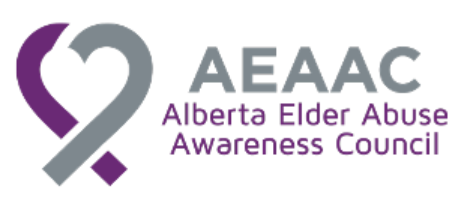- Details
- Published: 16 November 2018
By the Seniors of Canada Team
When it comes to later life, in mainstream media, we find that you typically see two themes: the Viagra/Freedom 55-type photos — affluent, attractive retirees dancing or golfing their way through their golden years — and photos from the other end of the spectrum, often depicting weak, physically frail older people who seem to need help. Oversimplified stereotypes like these fuel ageist narratives and add to a belief that all older people fit into one of two boxes. Ageism cuts across the life course and is understood as occurring when one is perceived to be too old or too young to be or to do something (Nelson, 2005). The most socially “normalized” of any prejudice, ageism is a widespread practice and has negative impacts on older people’s health and well-being. Ageist beliefs can, in fact, be internalized, and older people may come to believe the negative stereotypes about their age group. We know that older age is characterized by great diversity and with aging populations around the world, we need to act now to generate a positive effect on individuals and society.
In 2010, Humans of New York (HONY) began as a photography project with the goal of photographing 10,000 New Yorkers including quotes and/or short stories from their lives. Brandon Stanton, the creator of HONY, then continued to distribute these stories and pictures through social media (i.e. Instagram, Facebook). HONY has made a great impact around the globe with its simplistic take on everyday life. The images of everyday people on the streets of New York have provided a worldwide audience with a glimpse into the lives of the ‘everyday humans' in that city. Following the model and simplicity of HONY, the idea of portraying older adults “as they are” seemed to be an effective means of conquering ageism, and overcoming common age stereotypes that are so often held by the younger generation today. In doing so, we could shed light on the “everyday” older person.
In May 2017, members of the Gilbrea Student Group at McMaster University successfully received a Student Proposals for Intellectual Community & Engaged Scholarship (SPICES) grant with the goal of representing and depicting aging as it truly is – in other words, free of stereotypes and clichés commonly relied upon in popular media. We began the project with a focus group, where five seniors from the community provided their input on our initial ideas, name and goals of the project. We got wonderful and encouraging feedback, and used that to move forward, ensuring that we maintained our goal of representing seniors the way they wanted to be represented. Over the course of a year, we convened with a seniors advisory committee asked for their input on our project and our aim. We then met with local Hamilton, ON seniors at a time and place of their choosing and listened to their stories and photographed them engaged in activities meaningful to them. We met with each senior in a location that was part of their lives, at events; somewhere they enjoyed being, where they would want to be captured or doing something they loved. We asked questions about their stories, lives, and about what aging means to them. We then distributed these images on our social media and showcased our project in a photo-exhibit event in the heart of Hamilton, where we invited the public to come and see the everyday lives and stories of people in their community.
https://www.seniorsofcanada.org/story-15/
By providing snapshots of the everyday lives of Hamilton’s older people, beyond aging bodies, beyond illness, and beyond the picturesque ideals promoted by the aging enterprise, we can see what it is really like to be a senior in Canada without pre-conceived notions. This project is important because it provides an opportunity for collaboration and engagement across generations, campus, and community organizations. This project highlights the importance of conversations surrounding aging and engages younger generations in important and meaningful discussions about aging.
https://www.seniorsofcanada.org/story-8/
Based on the interest generated this past year we expect to make a greater impact in the years to come by spreading information about the project through our newly launched website. The structure of the project is likely to evolve over time but we will continue to present everyday images of aging and mitigate stereotypes surrounding seniors in society and the media. It’s time for everyone to see what we see on a daily basis with our work in the field of aging; that aging is a natural part of life and being a senior doesn’t make your life or story any less valuable or interesting. We hope that our stories and pictures encourage others to reach out to people of all ages and backgrounds in order to share stories with one another and learn across generations.
https://www.seniorsofcanada.org/story-1/
Do we think that our project will solve ageism and all the problems people in later life face? No (although, that would be lovely). Ultimately, we are interested in starting a conversation. Although we only have a year under our belt with this project so far, we hope to bring a more diverse lens to what it means to be a senior in today’s society. Social change requires sustained and coordinated action by a diverse range of public and private sector actors, and we hope to provide a platform to change attitudes towards aging to build a world inclusive of all ages as part of this action. If we make people, at any age, question or rethink their assumptions about later life, then we have done our job.
We are always recruiting and continue to collect stories and pictures of seniors across Canada. If you are interested to learn more or would like to participate feel free to email us at or visit our website www.seniorsofcanada.org.
The Seniors of Canada Team
About the team: The Seniors of Canada Team (Stephanie Hatzifilalithis, Rachel Weldrick, Stefania Cerisano, Hannah Song, Kelsey Harvey and Alison McNeil) is comprised of graduate students from McMaster University in the Department of Health, Aging, and Society, Department of Psychology, Neuroscience and Behaviour and the Gilbrea Centre for Studies in Aging.
The Seniors of Canada Team (Stephanie Hatzifilalithis, Rachel Weldrick, Stefania Cerisano, Hannah Song, Kelsey Harvey and Alison McNeil) is comprised of graduate students from McMaster University in the Department of Health, Aging, and Society, Department of Psychology, Neuroscience and Behaviour and the Gilbrea Centre for Studies in Aging.

















